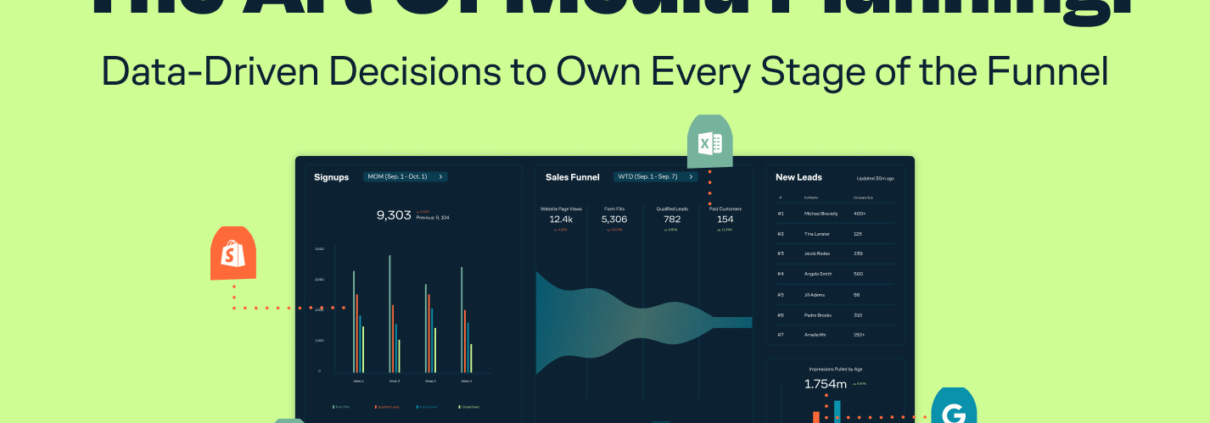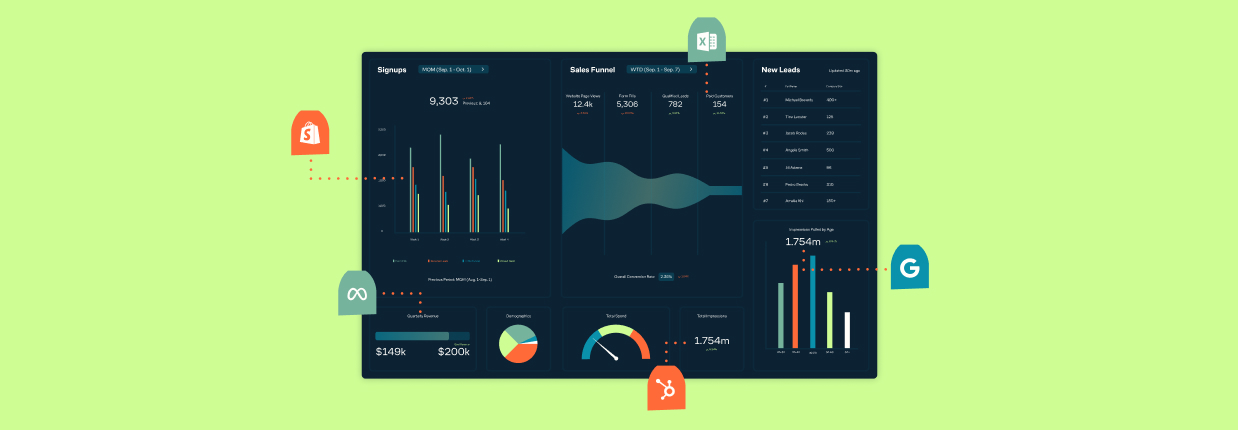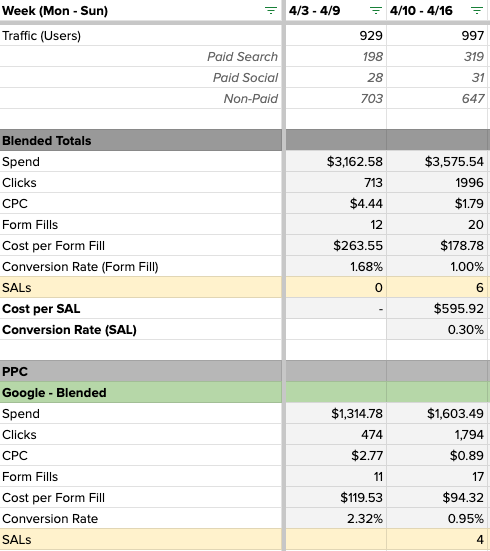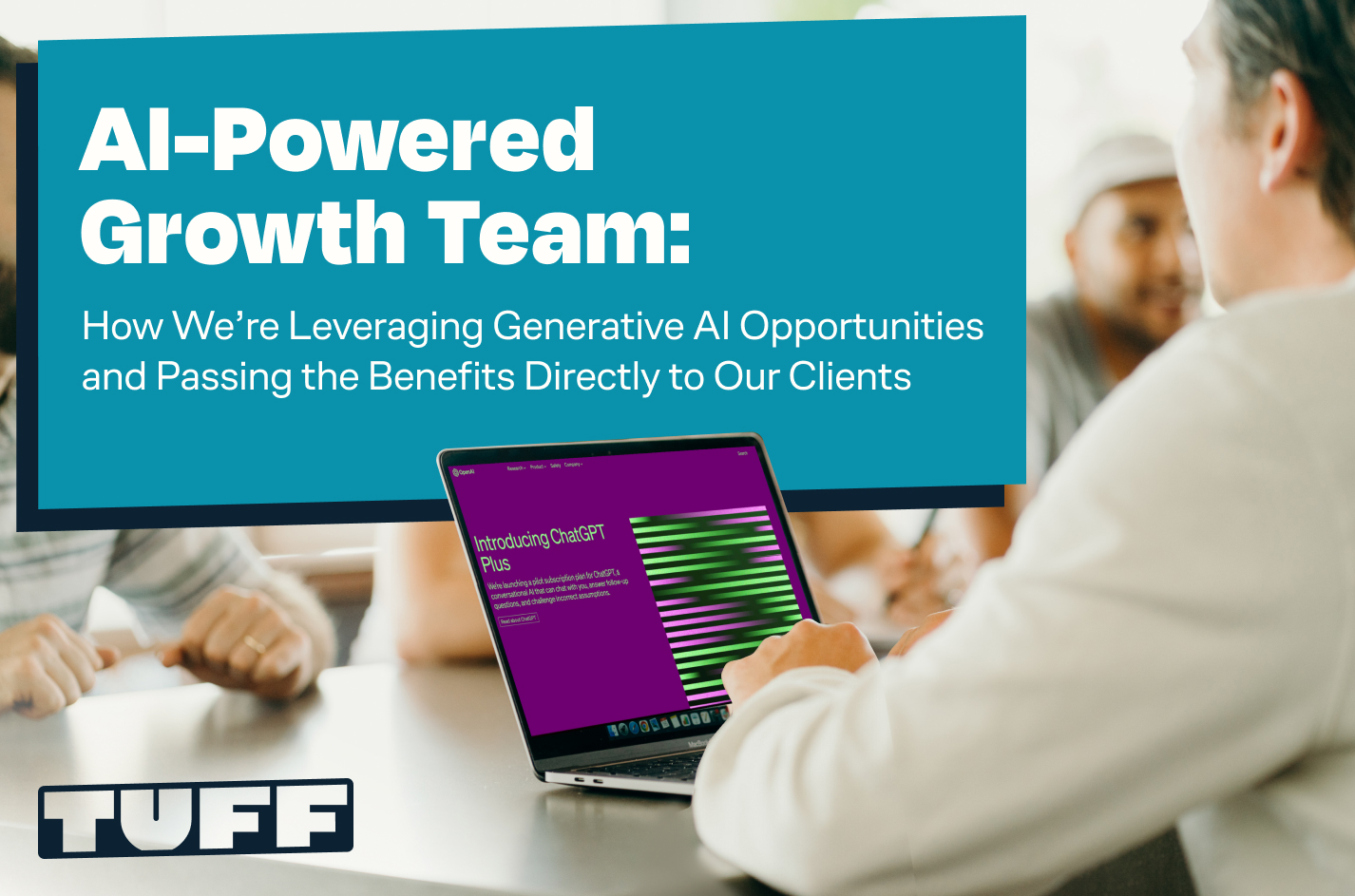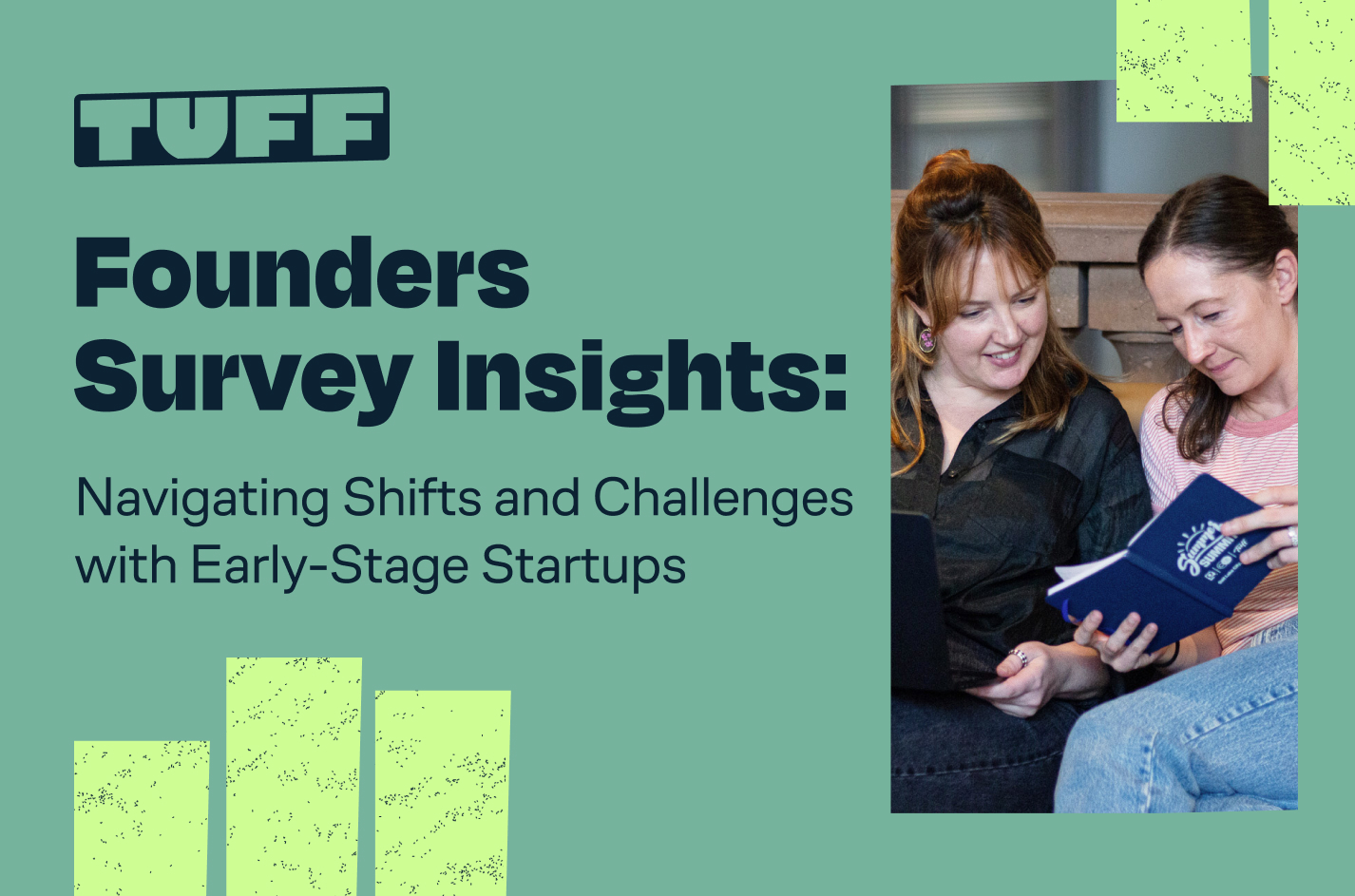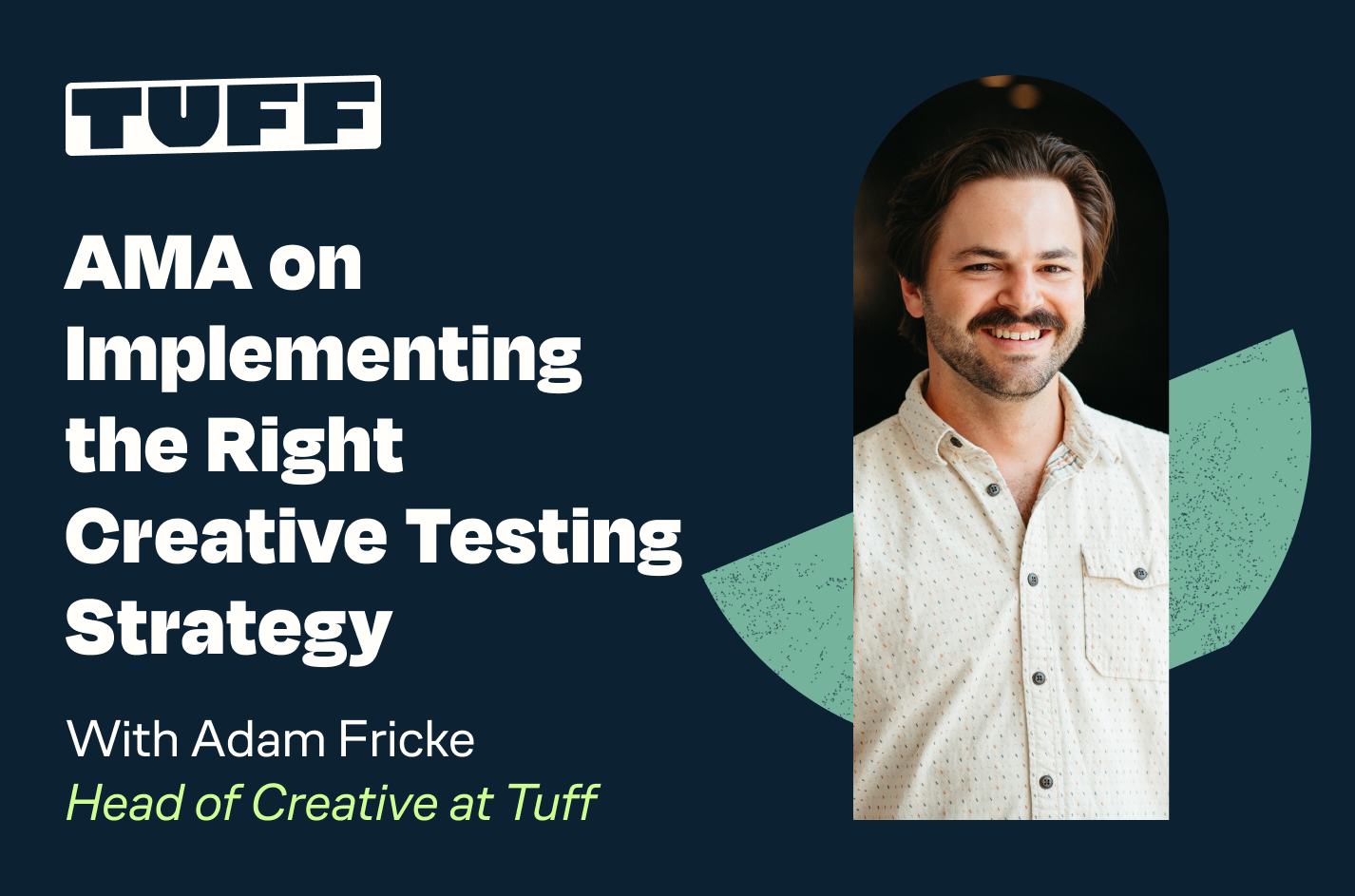The Art of Media Planning: Data-Driven Decisions to Own Every Stage of the Funnel
The term “full-funnel” has been a buzzword for years in advertising circles. It’s something that is referenced but not always put into practice. Full-funnel approaches to media planning are all hands on deck. You cannot silo each marketing channel into their own lanes, especially when it comes to paid media.
Advertising on social platforms influences branded search volume on Google Ads. Implementing a retargeting strategy with strong remarketing audiences on Youtube, can be repurposed for the likes of Meta. Forecasting budgets need to be done in conjunction with all paid channels in order to accurately estimate traffic, conversion volume, and overall customer acquisition costs.
Without a coherent objective across all channels, your marketing strategy is hindered before it even has a chance to start the race. Here’s how Tuff looks at owning every stage of the funnel with paid media.
Table of Contents
- A look under the hood of paid media
- Create a full-funnel paid media plan
- Forecasting a paid media strategy
- Full-funnel measurement
Full-funnel approach to media planning
When creating a full-funnel paid media plan, we think about three key areas of focus:
- Optimizing performance on each platform
- Setting up campaigns to work together in sync
- Balancing and integrating priorities
Our focus is long-term growth, not just one-off wins. We use data to weed out underperforming assets, optimize the best ideas, and build on what’s working. Every part of a paid media strategy should relate somehow back to the overall business objectives. If marketing dollars are being allocated somewhere, stakeholders should be rest assured knowing that these dollars tie into specific goals. How do we go about this?
We use these these 3 things to continually tie our paid media planning into a partner’s business objectives:
- Quarterly planning sessions – These are used on a quarterly basis to align all business objectives to actional tasks and projects for the upcoming quarter. This would also include all owned media planning in order to create a business strategy that is all encompassing.
- Executive summaries – During weekly external meetings with partners, our Growth Markets will include what we call executive summaries at the top of any notes involved in the week. This may include to do lists for internal & external teams, approvals, and high level reporting.
- Project retros – This may sound obvious, but after a project the prioritization of a recap can be incredibly beneficial when relating back to business objectives. What went well? What went wrong? Did we further our goals? How can we learn from the data for the next project?
Now, from a platform perspective, we manage campaigns across all of the major channels and lean on that knowledge to decide what and how we want to test and allocate resources to drive growth across brand and performance objectives. We find the perfect mix of channels specifically tailored to each partner. Not every channel is necessary, but the right channel mix can be instrumental for setting yourself up for success.
We will dive deeper into how to find the right channel mix below, but the next step to creating a full funnel paid media plan is audience segmentation.
Targeting top, middle, and bottom funnel users
Proper audience utilization can be the catalyst for a successful paid media plan. They are an abundant resource with virtually unlimited variations when you factor in the different options on every channel. There of course is some overlap since most users tend to be active across all kinds of marketing channels, but this can be used to your advantage.
Targeting the same users on Google, Facebook, and Tik Tok for example is one way to set up campaigns to work in sync with one another. This allows you to keep a thread throughout multiple touch points as well. The same message on multiple platforms amplifies its effectiveness. Here are a few of the audience buckets we consider when focusing on creating & capturing demand:
- Awareness – These are the users that are furthest away from converting. The top of funnel audiences are not familiar with your brand and not actively searching for your product or service. Brand campaigns on Youtube, Display, Facebook, or Spotify are effective with this audience type. Some examples of the audiences available include Affinity audiences and Interest Audiences. Focus on views, impressions, and reach when evaluating performance.
- Consideration – This is the stage of the funnel where users start to become leads. They are starting to actively search out your brand or brands similar to yours. Some audiences include In-Market, Lookalike to website visitors, and Competitor Keyword audiences. Campaigns on Google Search, Facebook, and Tik Tok work really well in this stage of the funnel to capture high intent users. They are in the research phase and ready to make a decision sooner than later.
- Intent – The bottom of the funnel where users are the highest intent, most likely to become customers, or repeat purchasers. Retargeting audiences are a great user base to lean on in this stage of the funnel. Google Search is a top quality platform for this audience type. Target the highest intent keywords where a user is ready to buy immediately. They are familiar with the product or service and tend to convert quickly.
Strategically retargeting users across multiple channels
Retargeting is something that we constantly find ourselves talking about. When done well, retargeting campaigns are highly impactful, easily scalable, and cost efficient. These can be utilized by any business in any industry. A truly impactful retargeting strategy combines all paid channels into one umbrella. Of course each channel will have some quirks of their own, but thinking about retargeting as a full channel mix is paramount to finding success.
Lean on website traffic to target users who have not converted across multiple touch points. Crafting a similar message for website visitors on Facebook and on Youtube for example helps reinforce your value props and allows you to further stand out from competitors.
Building performance creative to maximize media
What is the backbone for success in almost all paid media campaigns? That’s right – Performance creative. What is performance creative and how is it different from “regular” creative? Great question. Performance creative closes the gap between data and creative.
Putting it simply (read more here!), we approach performance creative by developing assets quickly and by diversifying the look, feel, messaging and ad archetype to get a speedy but data-backed idea of what is providing the most value. Then, we launch ads in a strategic way, measure performance and assess high-level trends, findings and hypotheses to help to develop our next tests and ideas.
Backing up to one of the most important parts of this – Measuring performance and gathering the findings, hypotheses around these findings and recommendations for the next round of creative. The intention behind this exercise is to closely collaborate across paid media <> creative at Tuff to put all of our brains together and develop a new round of creative assets that are fueled by data-driven insights.
We structure this conversation like this – where we discuss paid media spend throughout the funnel, notable audience insights, relevant competitor creative focuses and then move into talking through the performance from the previous round grounded by historical benchmarks to provide context and then collaborate on the key takeaways from all of the above. All of these variables help inform the creative brief which ultimately connects directly back to paid media performance.
One last take away from performance creative is the ability to apply learnings across multiple paid channels. Repurpose creative for different channels. Simply resizing graphics or videos from Meta to fit on Youtube or Display will help you get more out of your creative workload. That same “resizing” can be applied to general success. If a certain video resonates with an audience on Facebook, test it on Youtube. Maybe a specific CTA works really well for Display. This is a great place to start when designing the next Facebook ad targeting a similar audience.
A look under the hood of paid media planning
At Tuff, we have a full-funnel approach to paid media. What does that mean to us exactly?
We prioritize performance across all channels to make sure your paid efforts are working their hardest for your brand. We think intentionally and deeply about how we can generate demand at the top of the funnel and capture it in the mid and bottom of the funnel, designing a clear plan for which channels best relate to your brand, audience and product from Google and YouTube to Meta, LinkedIn and TikTok (and beyond).
Investing in paid social channels
Similarly to how we prioritize your brand, audience and product when we think about your full-funnel approach to media, we do the same when digging into specific paid social media channels. Not every brand is right for Facebook – or TikTok – or LinkedIn. Prioritizing what your brand represents, who your audience is and what problem(s) your product solves helps us get a clear picture of which social channels you should be investing in.
A few years ago, the go-to social advertising platform was Facebook/Instagram across brands and industries. There was rarely any consideration of the above factors – The decision was more-so based on, “Facebook and Instagram have the most daily active users so we should invest there.”
While the number of active users has continued to grow on Meta over the years – So have the number of active users across other platforms, like TikTok, LinkedIn and Pinterest. These platforms have continued to elevate their offerings for advertisers, and there are unique and incredibly valuable audiences to speak to here.
Breaking it down by audience size alone:
- Meta (Facebook/Instagram): 3 billion active users
- TikTok: 1 billion active users
- LinkedIn: 675 million active users
- Pinterest: 475 million active users
And now by what the user’s mindset is on each:
- Meta (Facebook/Instagram): Connection & Idea Sharing – While this is still the largest social platform in the world, people are coming to Facebook and Instagram for connection with their circle and to share their own ideas, thoughts and experiences.
- TikTok: Entertainment — When people visit TikTok, they’re distracted from reality and are aiming to be entertained whether that’s through a viral dance, a new trend or item to purchase or for a teaching moment.
- LinkedIn: Growth – When people visit LinkedIn, they’re more than likely looking for new professional and or educational opportunities.
- Pinterest: Inspiration – When people visit Pinterest, the whole idea is to pin things to your board and share ideas and pins.
Marrying what each platform is good for, who is on them, what the user’s mindset is on each with your business’s goals and ICPs, we’re able to customize a strategy that makes sense and allows us to not only effectively invest your advertising dollars but also show up where your audience is.
Allocating budget to PPC
PPC, or Pay Per Click, usually refers to all other paid media platforms outside of social media. The main player in this space is Google Ads of course which also includes Youtube and Google Display Network. They certainly have a chokehold on much of the PPC industry. Options don’t stop with Google though. PPC would also include all Microsoft advertising, Programmatic platforms such as StackAdapt or TradeDesk, or even audio ads!
Similarly to social advertising, not every PPC channel is perfect for every business. Youtube may work much better for a fintech company than it does for an ecommerce clothing company. Audio Ads might be more effective for your local therapy practice than it would be for the highly visible sunglasses seller. Part of the initial Paid Media strategy we develop is choosing which channels work best right away, then choosing which ones are up next to test.
Let’s get into what some of these channels work best for before we tackle the nitty gritty of developing the full funnel strategy.
Common PPC Channels
- Google Search: High Intent – It’s no secret that Google Search tends to have some of the highest intent users on the internet. Ads targeting search terms are hitting users when they are actively looking to buy or sign up. Finding a mix of Branded terms, Non-Branded terms, and Competitor bidding makes way for the most effective strategy with Search ads.
- Google Shopping Ads: Ready to Buy – Shopping is similar to Google Search where ads can show up when users are in the decision making process of what product to buy. These ads are highly visible and tend to bring in a high number of impressions. If you are selling a product, Google Shopping is an absolute must.
- Youtube: Visually Compelling – 2 billion monthly active users constantly watching videos surrounding all kinds of content. The options on Youtube are endless, but it is key to have quality video assets at your disposal. Whether you’re targeting content, keywords, or in market audiences, Youtube can be a viable platform regardless of your business goals. Industries that have lots of organic video content on the platform tend to translate well to Youtube Ads.
- Display Advertising: Retargeting Maximization – Display ads can be run in the Google Ads platform or on a separate programmatic platform such as StackAdapt or TradeDesk, but they tend to work pretty similarly to one another. These ads serve all over the internet while you are browsing articles, reading recipes, or playing games. Although it is certainly viable to create a robust prospecting strategy through Display ads, retargeting is one of the strong suits of this kind of platform. Focus your Display ads on users who have been to your site but have not converted. This effectively helps push customers further down the funnel.
- Microsoft Ads: Incremental Conversions – Advertising on Bing is not nearly as robust as Google, but it can be truly successful at bringing in incremental conversions. Microsoft makes it really easy to import existing Google Ads campaigns directly into Bing, so you can easily run the exact same ads targeting the same keywords on both platforms. Bing has around 10% of the search volume that Google does, so it’s a much smaller pond, but costs tend to be lower and competition tends to be less aggressive.
- Audio: Highly Local – Another channel that can be effective in all kinds of strategies, but audio ads are especially effective on a local level. Ads can be put on certain radio stations in the geographies your business operates for example. You can also go more broad and use Spotify Ads or StackAdapt to target the full US with ads while users are listening to music, podcasts, or audio books.
With the right budget allocation, all of these PPC channels work beautifully together. LEarning from one platform can easily be translated to another. Creative can be repurposed. Audiences can be shared. This is the simple idea behind creating a full funnel plan. Now it’s time to merge Social with PPC. Full-funnel media plan here we come!
Media planning that forecasts revenue
At Tuff, we lead with transparency in everything we do – especially when it comes to forecasting.
We aim to have continued dialogue with our partners around, “what does growth look like for your business?” so that we’re pivoting as much as needed while remaining true to our established growth expectations and goals. We understand that clarity walks hand-in-hand with vision – understanding all of the levers that can be pulled to reduce costs helps us align across teams to put together a clear, action-packed game plan that ultimately allows us to strategize, prioritize, link up cross-channel insights, and, ultimately, grow.
What does all of this actually mean? Well, here’s an example of what a Paid Media budget plan looks like:
Leaning on benchmarks like the ones we put together for 2022 here for example, we can create an accurate forecast of campaign performance solidified through recent data. These are living breathing documents. When spend, CPC, or conversion rate is changed, all other metrics shift with it. Those are the main metrics that can be influenced by a marketing team. Additional budget changes performance. Optimizing ads to lower CPC allows for additional traffic. Utilizing conversion rate optimization creates all sorts of efficiencies. Focus on these data points when testing on a regular basis.
Creating a simple Google Sheet like the one above allows us to work with an accurate forecasting model when developing a paid media plan. We want to be able to show partners what they can expect from their paid media dollars. Expectations are different depending on the campaign type, so that’s why we separate measurement out between Brand and Performance campaigns.
Did somebody say measurement! It is about that time, let’s jump in!
Measuring success across the full funnel
Measuring paid media effectiveness is a key component of a successful growth marketing strategy, but there are many ways to go about this. Just as there are several platforms to run ads on, there are just as many platforms for reporting, measurement, and tracking. Let’s take a look at a few of the most important things to keep in mind when measuring the success of your full funnel paid media plan.
Brand vs. performance campaigns
Measurement varies heavily depending on the objective of the campaigns in hand. Performance campaigns are easy. At least on the surface. Data is readily available to prove the success of campaigns and easily compare that success to other channels. Here’s some of the easy metrics we use to evaluate conversion campaigns.
- Clicks
- CPC
- Conversions
- CPA
- Conversion Rate
Seeing a lift in conversion volume or a decrease in cost per acquisition tells us a story of success and we can point to the who, where, when, how, and why fairly easily. Sorting by audience or creative. Breaking down KPIS by geography or time of day. Segmenting traffic by landing page behavior. All of these things can be utilized to help paint a fuller picture of the success of performance campaigns, but at their root, the numbers are simple. Costs go up or down. Conversions scale or they don’t. People convert more or less often on a landing page.
All of this thinking applies to all paid media. Now, Google Ads will have different benchmarks than Facebook for example, but comparing performance campaigns on Google to Facebook is easier than a comparison for Brand campaigns. We actually wrote a whole article about measuring brand campaigns, but here is the TLDR.
Measuring awareness campaigns
First and foremost, the metrics that you want to track are going to be different. Direct conversions from these campaigns means much less when the goal is Brand Awareness and the audience is mostly top of the funnel. Here’s what we look deeply at optimizing constantly:
- Impressions
- CPM
- Traffic
- CPC
- Impression Share
- Lift in direct / organic traffic
Brand campaigns are all about improving the recognition of the brand. More traffic from other sources. Cheaper traffic from campaigns. Higher impression share. All of these things are what we are looking to achieve when running a Brand campaign. They all indicate success. If you chose to only look at the last click conversions from a Display campaign for example, it may look like the campaign is not working when compared to Paid Search. But zooming out on the whole paid media mix lifts the curtain to tell a different story. Here are a few tips for measuring Brand campaign performance:
- Track branded search volume – This can be done on Google Ads or Search Console. Measure the volume before and after campaign flights to understand the impact of campaigns.
- Segment by geography – Launching campaigns in only a few states or locations allows for an easy form of measurement when looking at the data. If your Youtube campaign only ran in Dallas and Dallas saw a 3x increase in new users from Direct traffic, that is a very strong correlation to the ads.
- Compare overall conversions/revenue – Once your Branded campaigns are running, use month over month, quarter over quarter, or year over year lookback dates to monitor the overall performance lift from all sources. Brand campaigns can sometimes pay dividends months down the road.
Relying at multiple forms of attribution
Attribution for Paid Media has always been tricky to nail down perfectly. After all, there are so many ways to attribute conversions across a full media mix. Tools like Google Analytics show multiple points of attribution across a conversion journey. Looking at just one of them doesn’t paint a complete picture. Measuring the success of a Display campaign for example by Last Click Attribution can send a misleading message when compared to a First Click model. Here’s a quick summary of attribution methods we use in tandem with one another.
Common Types of Attribution
- First Click Attribution – As the name suggests, conversions would be attributed to the channel with a user’s first click for this attribution model. This is incredibly useful when running brand campaigns that are used for visibility. Many times paid ads tend to be the first click on a conversion journey while the last click falls to Direct or Organic traffic. This method widens the lens of reporting on paid media effectiveness.
- Last Click Attribution – Possibly the most common form of attribution, Last Click gives full conversion credit to the last click a user makes before converting. This is defined slightly differently depending on the platform you use, so be sure to read the fine print. Last Click on Google Analytics for example defaults to Last Non-Direct Click. This attributes a conversion action to the click before a Direct source.
- Data Driven Attribution – Google’s newest attribution model that is rolled out in Google Ads and GA4. This model uses an algorithm to share the attribution across multiple touch points on a conversion journey. It is backed by data as the name suggests, but can
- Assisted / View Through – These conversions can be seen in multiple reporting or ad platforms such as Google Ads and Analytics. They are defined as conversions that had more than one source touch point in the conversion journey. A very common example of this is a user clicking on a Google Search Ad, then later typing a website name directly into the internet browser. Google Search would receive an “Assisted Conversion” here because it was on the conversion path. Even if you are using only one attribution method, these conversions are a good way to prove out the effectiveness of specifica paid media channels.
Reporting with various forms of attribution may require some additional work, but it will be worth it in the long run for the health of a business. Understanding user behavior is invaluable information, regardless of the industry. Especially when there are multiple marketing channels in the mix, having more than one form of attribution to report on can give you the upper hand.
Test, learn, report, repeat!
When it comes to Full Funnel Measurement of paid media campaigns, testing and reporting are where everything starts to come together. We already tackled creating a paid media plan, forecasting a strategy, and measuring success with different campaign types. These are the last pieces of the puzzle and they go hand in hand.
With all of the work that goes into a full funnel approach like this, testing and proper reporting must be top of mind. Testing to ensure that performance is constantly improving and reporting to make sure the most accurate data is readily available when making decisions.
Reporting on a full-funnel media plan
Reporting can of course take many shapes and there are endless platforms you can utilize to get from point A to point B. Here’s just one very simple example of a way that Tuff reports on campaigns, using Google Sheets. Reporting doesn’t have to be complicated to be impactful. A simple weekly reporting table broken out by marketing channel, audience, or campaign type can go a long way.
Once there is confidence behind the reporting associate with your paid media mix, lean into testing. All successful digital marketing requires some form of testing to be the best it can be. Here are two tips on what to focus on from the jump:
- Creative, creative, creative – Did we mention creative? This is one of the biggest opportunities to test for all paid channels, audiences, and placements. This is where you can test different messaging or ad copy. Video ads vs. static ads. UGC content or animation. We recommend 2-3 different assets for any marketing channel that requires creative as its main driving force (Meta, Youtube, Display)
- Landing page optimization – This is where CRO can come in to save the day. Paid media is only as effective as the landing page a user comes to from an ad. Focus on improving the conversion rate, exit rate, and overall TOS. These metrics indicate ad effectiveness and user quality.
- Audience sourcing – Different audiences work well for different platforms. Depending on the stage of the funnel you want to target, there are countless user segments on each platform to experiment with. Lean on In Market audiences for Youtube campaigns. Lookalike audiences on Meta. Take advantage of remarketing lists for Display networks. Not every audience is going to be effective, but after a few weeks of gathering data, you can pivot, expand, or retest.
Media strategies in perfect harmony
There you have it. Paid media planning, forecasting, measurement, and everything in between. Digital marketing is an ever changing landscape with endless potential. Combining all paid efforts under one umbrella is your head start at unlocking that potential and building upon it. There’s not a one size fits all approach, but working with the information laid out above brings you closer to finding that approach that fits like a glove.
